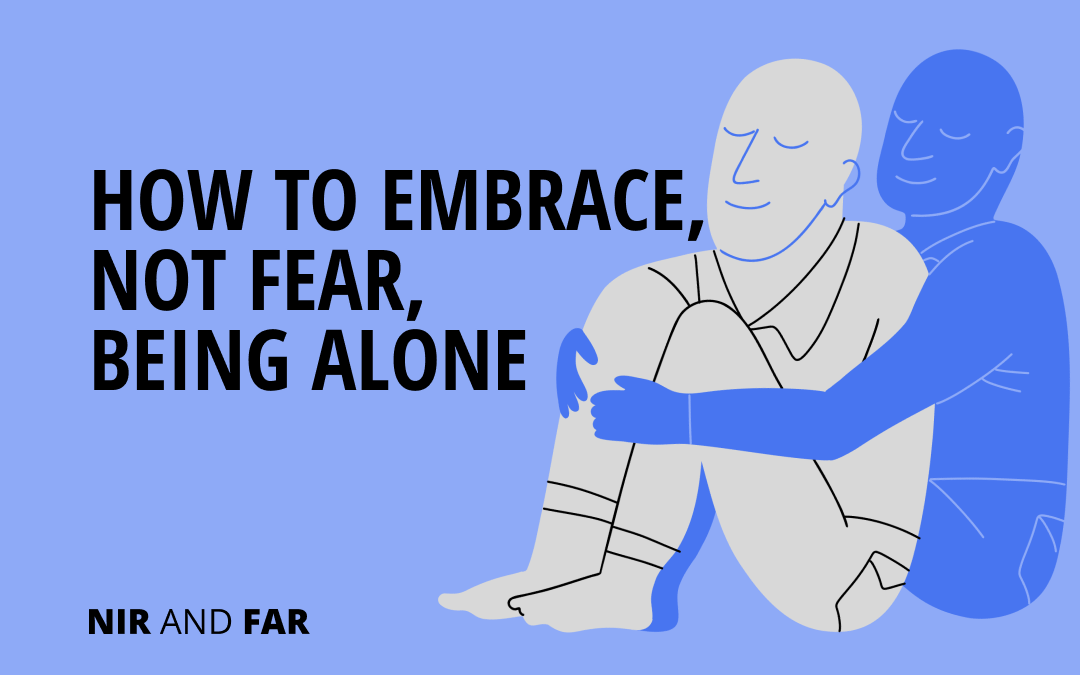Are you afraid of being alone? Well, you’re not alone in that.
In a 2014 survey of 2,000 adults, one in three said they fear being alone: 40% of women and 35% of men.
The world is riddled with distractions that prevent us from having to feel alone even when we aren’t in the physical presence of another person. While no study pinpoints social media as a cause of depression and feelings of isolation—in fact, social media can be a tool for combatting loneliness—it, along with texting, television, and video gaming, can distract us from embracing solitude.
Ironically, the more we subvert quality alone time with distraction, the more we cripple our capacity for being alone—and stoke our fear about it. Giving in to fear of being alone perpetuates a cycle of loneliness.
Fear of Being Alone
Having a fear of being alone can be debilitating.
It potentially influences our decisions for ourselves in negative ways: We do anything to escape the perceived pain of being alone. You might try to fill your loneliness by filling your time with people or activities you don’t truly enjoy, including maintaining fickle friendships or diving headfirst into romantic relationships that aren’t good for us.
Some studies show that the fear of being alone pushes us to prioritize relationship status over relationship quality, leading to unhealthy partnerships.
On the other hand, embracing quality solitude can enhance your relationships.
In Michael Easter’s The Comfort Crisis, a book about breaking out of your comfort zone in search of a more fulfilling life, Matthew Bowker, PhD, a professor of psychology at Medaille College, says, “Building the capacity to be alone probably makes your interactions with others richer. Because you’re bringing to the relationship a person who’s actually got stuff going on inside and isn’t just a connector circuit that only thrives off of others.”
Remember: Your thoughts are not your true self. Don’t let fear of your own thoughts stop you from seeking alone time. Many people falsely believe the voice in their head is the most accurate depiction of themselves, but it’s not.
Don’t give undue importance to the chatter in your head. You don’t have to believe everything you think.
Schedule Time With Yourself
Practice makes perfect.
The only way to overcome a fear of being alone is to face being alone with a new mindset.
You might decide that your anxiety about being alone is holding you back and that you want to become the type of person who is content on their own. Perhaps achieving that high level of independence or self-esteem is one of your top values.
In that case, find and schedule space for it in your timeboxed calendar. Timeboxing, a technique I explore in my book Indistractable, is all about identifying your values—the attributes of the person you want to become—and ensuring they are represented in your calendar. If you’ve never timeboxed before, start with this free weekly calendar template.
Decide how much time you want to spend on your own per week. Even scheduling 15 minutes of alone time is a step forward. Perhaps you’ll use that time for a morning brain dump in a journal. Or maybe you’ll take 30 minutes to an hour to go on a walk alone. (Psst: Both of these qualify as “good breaks” that rejuvenate you during the workday.) Or take a few hours to go out for a nice solo dinner or adventure.
Look Inward
Only by understanding our discomfort with being alone can we begin to control it and find better ways to deal with negative urges.
If you’re experiencing discomfort in being alone, don’t let that internal trigger, or negative feeling, drive you to distractions like turning on the TV or opening TikTok. Instead, use these four steps to master internal triggers:
First, zero in on that discomfort; second, write down how it’s making you feel.
It’s important to realize that discomfort isn’t necessarily a bad thing. It doesn’t always need to be relieved. It can be leveraged like rocket fuel to propel us forward.
Instead of looking for the easiest way to rid ourselves of pain, we can look within to understand what’s driving our desire to escape the way we feel. What are we avoiding when we don’t spend time with ourselves, even if we know it’s something we want to do?
The third step is to get curious about your emotions. When you’re uncomfortable about being alone, how does that affect you? Do you feel stomach butterflies? Are you wondering what everyone else is doing? Is your breathing steady or fast?
The last step is to beware of liminal moments, or transitions from one thing to another when we’re particularly susceptible to distraction. A way to combat liminal moments is using the 10-minute rule, aka “surfing the urge.”
If you’re trying to spend some time alone but are really not enjoying it, tell yourself it’s fine to give up, but not for another 10 minutes. And maybe, by the time those 10 minutes are up, the discomfort won’t seem so overwhelming.
As Oliver Burkeman wrote in The Guardian, “It’s a curious truth that when you gently pay attention to negative emotions, they tend to dissipate—but positive ones expand.”
We all have the capacity to enjoy being alone. Don’t let distractions derail you from looking inward.
Related Articles
- Schedule Maker: a Google Sheet to Plan Your Week
- Habit Tracker in Google Sheets – Free Template
- A List of 20 Values [and Why People Can’t Agree On More]
- Timeboxing: Why It Works and How to Get Started in 2024
- An Illustrated Guide to the 4 Types of Liars
- Hyperbolic Discounting: Why You Make Terrible Life Choices
- Happiness Hack: This One Ritual Made Me Much Happier

